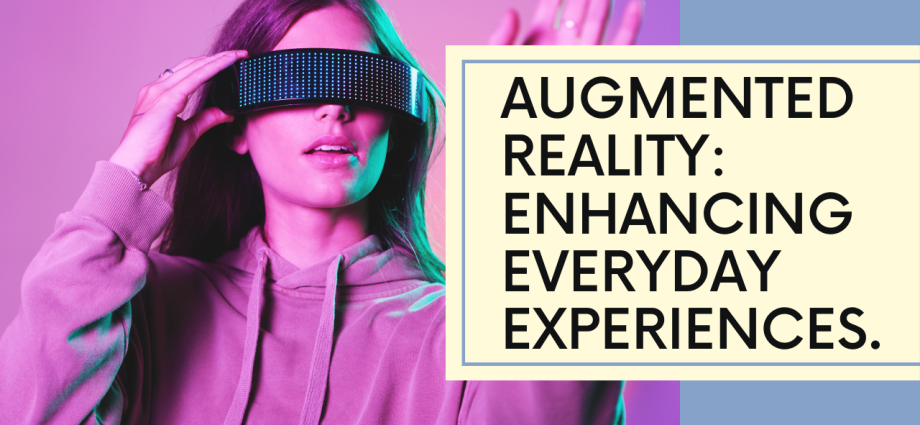Augmented Reality (AR) technology is rapidly transforming everyday experiences, blurring the lines between the physical and digital worlds. By overlaying digital content onto the real world through smartphones, tablets, and specialized AR devices, AR enhances interactions, entertains users, and revolutionizes various industries. Here’s a glimpse into how AR is enhancing experiences in everyday life:
- Enhanced Shopping Experiences: AR is revolutionizing the retail industry by providing immersive shopping experiences that bridge the gap between online and offline shopping. With AR-powered virtual try-on solutions, customers can visualize how products like clothing, accessories, and furniture look and fit in their real-world environment before making a purchase. This enhances confidence in buying decisions and reduces the need for returns, improving customer satisfaction.
- Interactive Learning and Education: AR is transforming education by making learning more interactive, engaging, and accessible. Educational apps and AR-enabled textbooks bring lessons to life by overlaying 3D models, animations, and interactive elements onto physical objects. Students can explore complex concepts in subjects like science, history, and anatomy in a hands-on, immersive manner, fostering deeper understanding and retention.
- Navigation and Wayfinding: AR-powered navigation applications enhance wayfinding and navigation in urban environments, indoors, and outdoors. AR overlays directional cues, points of interest, and real-time information onto the user’s field of view, providing contextually relevant guidance and assistance. This simplifies navigation in unfamiliar environments, improves situational awareness, and reduces the likelihood of getting lost.
- Entertainment and Gaming: AR transforms entertainment and gaming experiences by merging digital content with the real world. Popular AR games like Pokémon GO and Harry Potter: Wizards Unite encourage players to explore their surroundings and interact with virtual characters and objects overlaid onto the real-world environment. AR also enriches live events, museums, and attractions by providing interactive exhibits, immersive storytelling, and enhanced experiences for visitors.
- Remote Collaboration and Communication: AR facilitates remote collaboration and communication by enabling users to share and interact with virtual content in real time. AR-enabled video conferencing platforms allow users to annotate, manipulate, and collaborate on 3D models and digital content during meetings and presentations. This enhances communication, fosters collaboration, and improves productivity for remote teams.
In conclusion, Augmented Reality is enhancing everyday experiences by providing immersive shopping experiences, interactive learning and education, intuitive navigation and wayfinding, engaging entertainment and gaming experiences, and facilitating remote collaboration and communication. As AR technology continues to advance, its potential to transform various aspects of daily life remains boundless, promising to reshape the way we interact with the world around us.



Comments are closed, but trackbacks and pingbacks are open.